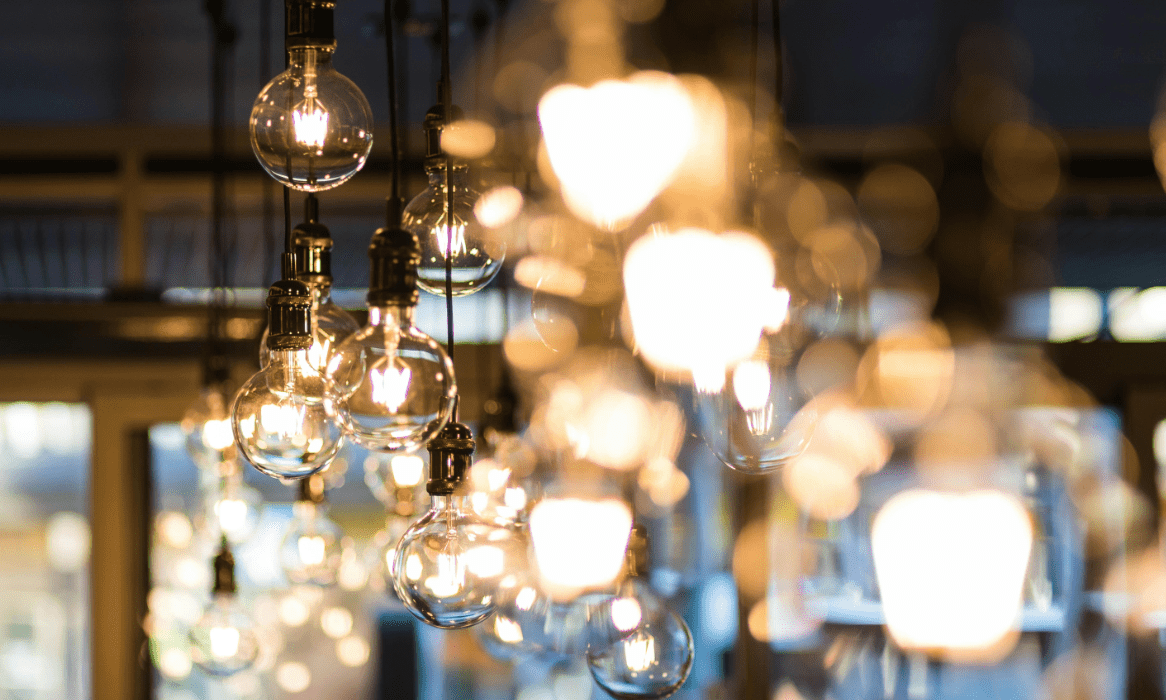Modular lighting systems are created from individual modules which can join together interchangeably to deliver a tailored solution to any lighting problem. They are designed to remove the costly downtime associated with traditional lighting systems in which the entire system must be replaced when a simple fault occurs. So, do you know how to choose the right style for your home or business?
5 Common Modular Lighting Styles
Modular lighting is efficient, flexible and future-proof. It prioritises the needs of home and business owners by minimising downtime and costs while maximising available light. There are various styles available, and the most common of these are:
1. Track Systems
In a track system, a track is attached to the ceiling and individual light heads are then added to this track. These light heads can be repositioned to highlight focal points or maximise occupant comfort, and depending on the size of the track, additional light heads can be added to increase the brightness within the space.

Track systems are ideally suited to open space living, retail and gallery spaces as they allow for reconfiguration without the need for rewiring or moving fixtures. Their sleek, elegant appearance blends well with the typical decor of modern businesses and the ability to interchange light heads means that interior design changes can be made freely without the need for an electrician to reposition the lights.
2. Suspended Grid Systems
In a suspended grid system, a ceiling-mounted grid is used to support the modular light units that will illuminate the space. In contrast with a single-track system, a grid offers enhanced functionality and aesthetic appeal as light heads can be spread out over a wider space and even interspersed with decorations of your choice to further enhance their appeal.
Grid systems are predominantly designed for industrial and commercial spaces, and it is also possible to incorporate sound absorption materials into the grid system to improve the acoustics within a space, again extending the design possibilities.
3. Recessed Downlights
If your client is looking for an understated design, recessed downlights should be your go-to solution. These modular units allow you to mix and match trim styles, lamp types, and beam angles without the need for obvious or unsightly fixtures.
By recessing modular downlights, a high-end, bespoke finish is achieved. Additionally, incorporate smart lamps to offer your client complete control of their lighting system, and they will certainly thank you.
4. Panels and Sculptures
Eye-catching statement pieces are a strong design choice, so if your client values a marriage of creativity and functionality, consider implementing modular panels and sculptures into your interior design. Either wall or ceiling mounted, these systems consist of interlocking geometric shapes which can be quickly reconfigured into specific patterns to suit individual preferences.
Panel or sculptural lighting systems are exciting, bold, and completely customisable. They are interactive and, when fitted with different-coloured lamps, allow the client to set the system to suit their mood.
5. Magnetic Lighting

Typically, all of the lighting systems described above are connected mechanically, but a revolutionary new design uses magnets to connect light modules together. This makes modifying any of the above styles a quick and simple affair, which individuals can carry out themselves. For customers who truly value their time, magnetic modular systems should be a strong consideration.
Not only does magnetic lighting enable elements to be swapped out easily for maintenance reasons, but those elements can just as easily be swapped out when personal style preferences change or the decor of the space is updated.
Which Modular System is Right for You?
Choosing the right lighting style requires careful consideration of various factors, including the function of the space, the needs of the client and their budget. Always ensure that the lighting options presented will satisfy the client’s needs, illuminating and spotlighting specific architectural elements as needed. Remember that different-sized spaces require different lighting styles, and understanding the function of the space is vital to effectively lighting it.
When supporting your client in selecting an appropriate lighting solution, it’s important to explain the advantages and drawbacks of each system as their priorities may differ based upon long-term costs, ease of maintenance and the ability to adapt their lighting solution to changing personal preferences.
Conclusion
Modular lighting allows interior designers to customise an innovative lighting solution for each client, based upon their specific needs, budget and preferences. Why not explore the possibilities on your next sustainable interior design project?









Leave feedback about this